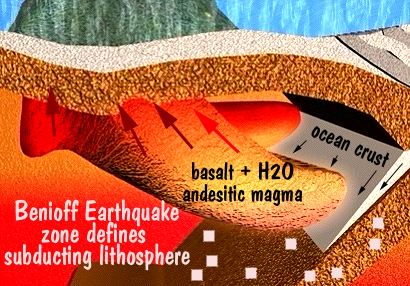
Magma Production
The subducting oceanic crust (wet-basalt) is rapidly heated and becomes andesitic magma. The magma rises and breaks through the surface forming a chain of volcanos between 100 - 450 k behind the subducting piece of the lithosphere.
Benioff Zone
This is the focii of earthquakes that define the subducting lithosphere. Earthquakes happen here because the sinking lithosphere has building friction between it and both the stationary lithosphere and the top of the asthenosphere.
Once the lithosphere has sunk to about 700 km it has fundamentally become part of the surrounding asthenosphere and there is no longer any friction.
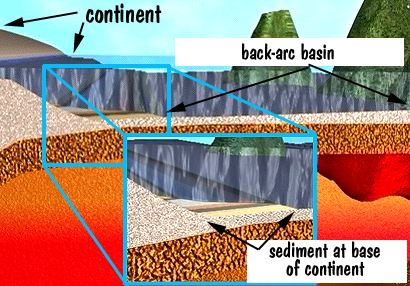
Back-arc Basin
behind the volcanic ridge is a thinning piece of crust called the back-arc basin. It is caused by the stretching of the top of the stationary oceanic crust by the descending plate. This basin may be anchored on the opposite side by a continent.
Continent
The continent is fundamentally stationary over the stationary lithosphere. It will have a normal continental slope and rise with sediments around the edge from weathering of its interior surface.
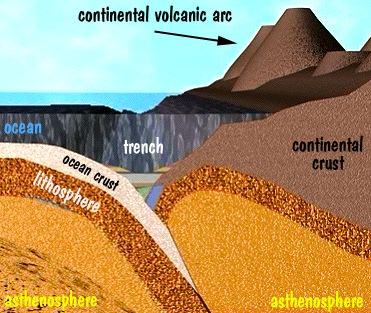
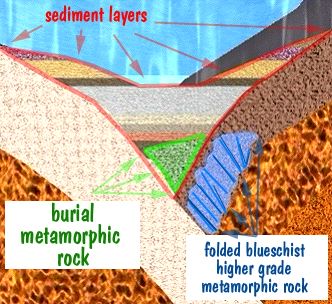
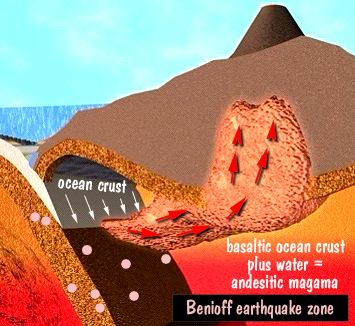
Now let move to the opposite side of the spreading center and follow it to its end.
At the other end, the lithosphere and ocean crust both end up subducting below a continent.
Here the geology is similar, yet a little different that than that previously described.
Subduction Zone
This subduction zone produces a trench at the outward edge of the continent. But this trench is close enough to the continent to be directly filled with the debris coming from the weathering processes on the continent's surface.
Trench
This trench would have more material and like heavier material (larger size) being in close proximity to the continent. Hence there would be active metamorphic processes in the bottom (burial metamorphism).
Continental Crust
the pressure for the descending lithosphere and ocean crust would aid in the formation of higher pressure and temperature blue schist just within the outer margins of the continental crust. There would be highly deformed metamorphic rock being created. there might also be thrust faulting due to he pressure created at the subduction zone.
Magma Production
This subducting zone would also produce magma from the wet melting ocean crust (basalt). It might be more varied in content as it would be passing through many layers of rock and take longer to surface. It would provide additional heating to the crust materials aiding in the formation of new metamorphic rocks potentially at good depth.
Batholiths
Eventually (multi millions of year later) this set of continental arc volcanos would be eroded and would leave behind giant batholiths from where the original magma chambers first existed.
The remnants of this cycle would be good material to create the cratons of future continents. They would consist of thick continental crust with structurally sound metamorphic and igneous plutons.
| NEXT | TOC | PREV |